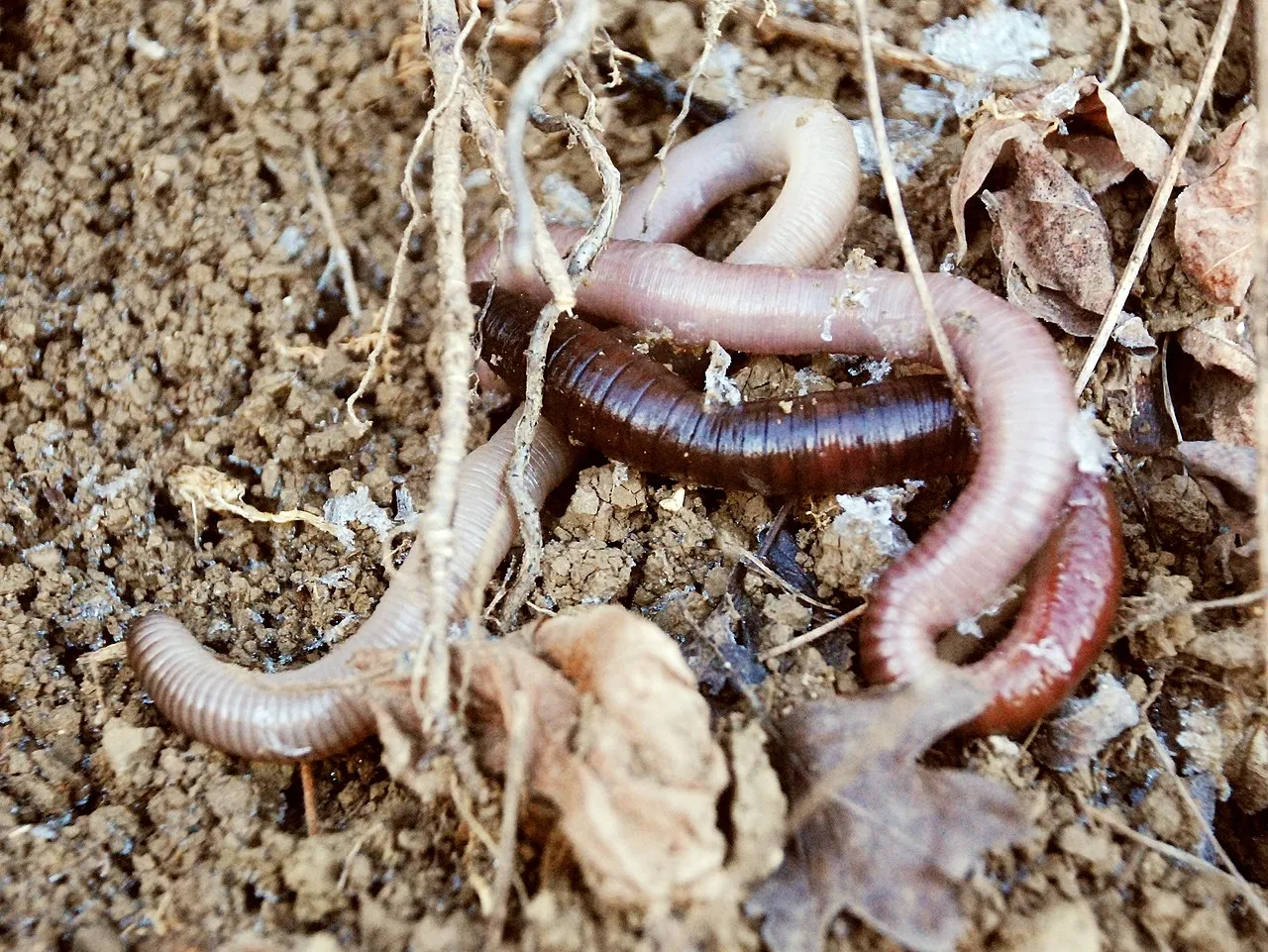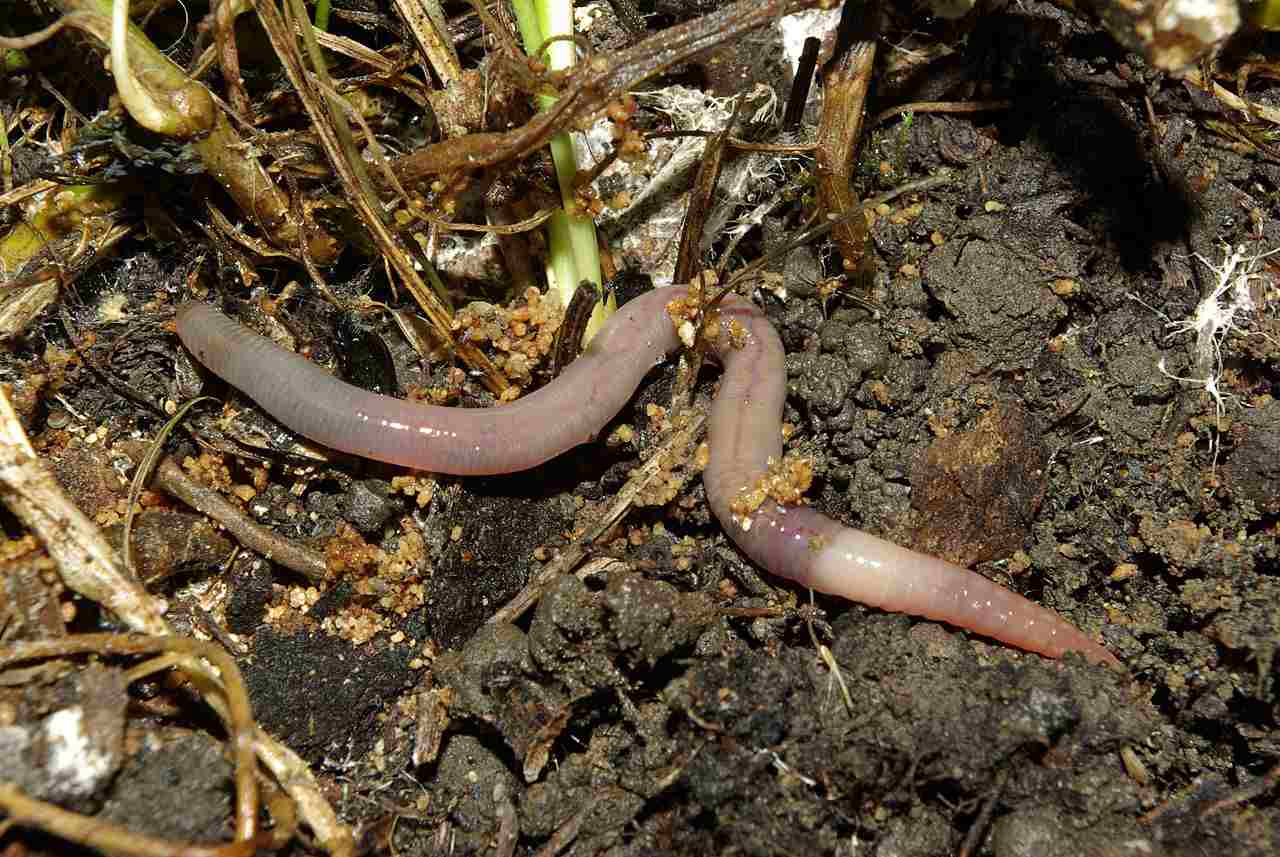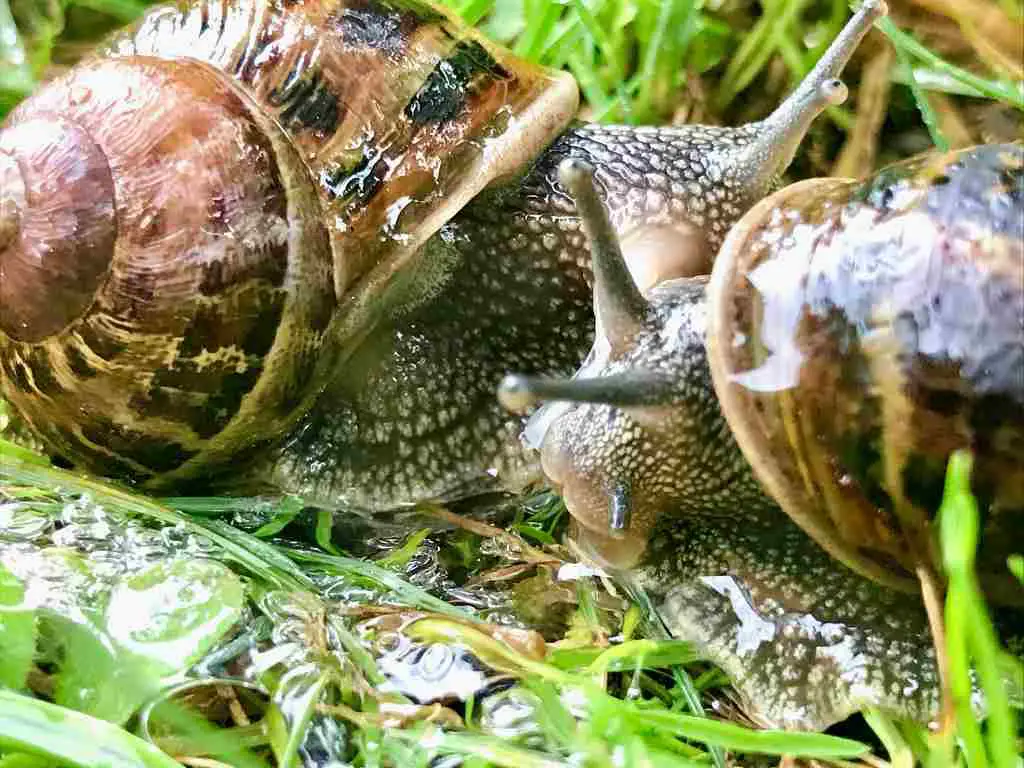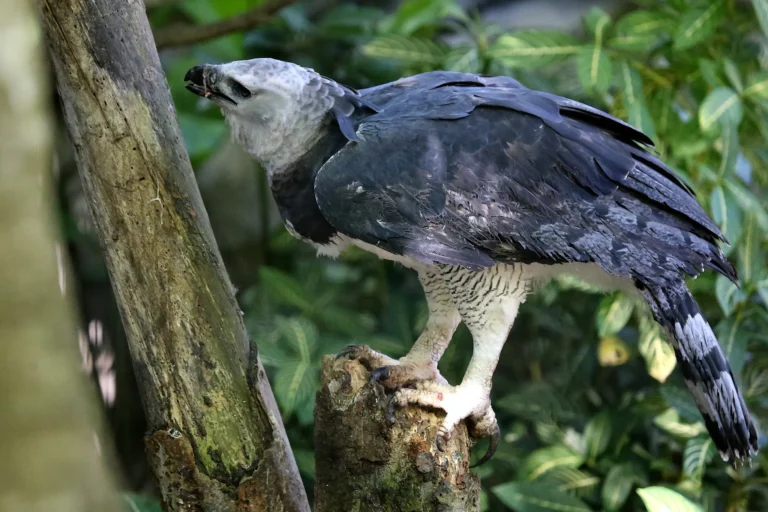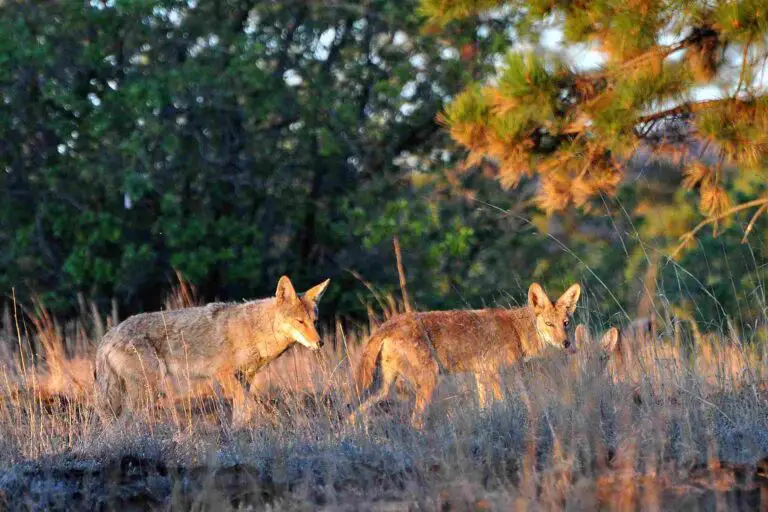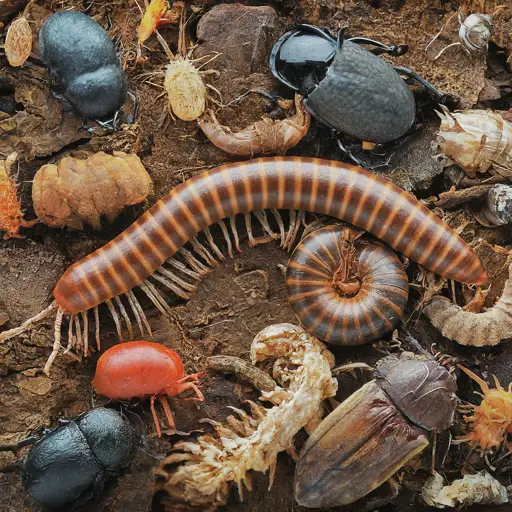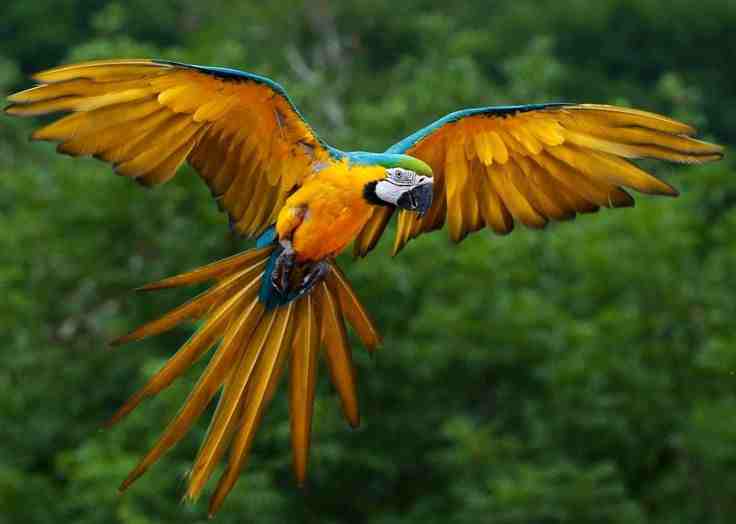13+ Detritivores In The Alpine Biome Discussed
Examples of detritivores in the alpine biome are springtails, alpine earthworms, and alpine sowbugs, among many others. These creatures play a vital role in breaking down organic matter, supporting nutrient cycling, and promoting soil health. They also serve as a food source for other organisms and contribute to the overall ecological balance. Each detritivore has unique adaptations that allow them to thrive in the challenging conditions of the alpine biome, reinforcing their critical role in sustaining the ecosystem’s resilience and vitality.
1. Springtails (Collembola)
Springtails, belonging to the Collembola order, are small, wingless detritivores that play a crucial role in the alpine biome. These tiny arthropods, often less than 6 mm in length, are known for their remarkable jumping ability, facilitated by a spring-like structure called the furcula. They thrive in moist environments and are typically found in the soil, leaf litter, or under decaying wood, where they feed on decaying organic matter, fungi, and microorganisms. By breaking down complex organic materials into simpler compounds, springtails contribute significantly to nutrient cycling and soil health in alpine ecosystems.
Despite their small size, springtails are abundant and diverse in alpine environments, with many species adapted to withstand cold temperatures and fluctuating weather conditions. They are highly sensitive to environmental changes, making them useful bioindicators for assessing ecosystem health. As primary decomposers, springtails support the food web by recycling nutrients and providing a food source for other organisms like beetles, spiders, and mites. Through their activities, they help maintain the structure and fertility of alpine soils, promoting plant growth and overall ecosystem resilience.
2. Alpine Earthworms (e.g., Lumbricidae Species)
Alpine earthworms, belonging to the Lumbricidae family, are important detritivores in the alpine biome. These annelids play a vital role in soil formation and nutrient cycling by consuming organic matter and excreting nutrient-rich castings. Through their burrowing activities, they aerate the soil, enhancing its structure and water retention capacity, which is crucial in high-altitude environments where soil conditions can be harsh and prone to erosion. Alpine earthworms contribute significantly to the decomposition process, breaking down leaf litter and other organic materials, thereby facilitating the growth of alpine flora.
Earthworms in alpine regions face unique challenges, such as cold temperatures and shorter growing seasons. Yet, these resilient organisms have adapted to thrive in such conditions. They are typically found in moist, shaded areas with ample organic material to feed on. By turning over the soil and mixing organic matter with mineral particles, alpine earthworms help create a fertile environment for plants to grow. This, in turn, supports a diverse range of organisms that depend on these plants for food and shelter, underscoring the earthworms’ role in maintaining ecosystem balance and sustainability.
3. Alpine Sowbugs (e.g., Porcellio scaber)
Alpine sowbugs, such as those from the Porcellio scaber species, are a type of isopod that acts as a detritivore in the alpine biome. Sowbugs are small, segmented crustaceans that are adept at decomposing organic material like decaying plant matter and leaf litter. They contribute to nutrient cycling by breaking down complex organic compounds into simpler forms that are more readily absorbed by plants and other organisms. In the alpine biome, sowbugs are typically found under rocks, in leaf litter, and in other damp areas where they can avoid direct sunlight and maintain their moisture levels.
These crustaceans are not only key players in the decomposition process but also serve as a food source for other alpine creatures such as birds, spiders, and small mammals. The alpine environment poses unique challenges, with its cooler temperatures and limited moisture, yet sowbugs have evolved to withstand these conditions. Their role in breaking down organic matter is vital for maintaining soil health and supporting plant life, which in turn sustains the broader ecosystem. By contributing to the decomposition and nutrient cycling processes, alpine sowbugs help maintain the balance and resilience of the alpine biome.
4. Beetle Larvae (e.g., Carabidae Family)
Beetle larvae from the Carabidae family are integral detritivores in the alpine biome, playing a crucial role in decomposition and nutrient cycling. These larvae, often found in the soil or among decaying plant matter, consume a variety of organic materials, aiding in their breakdown and recycling. As they feed on dead plant material, they contribute to the enrichment of soil, promoting the growth of vegetation essential for the alpine ecosystem’s health and resilience. Carabid larvae are also known for their predatory habits, feeding on other insects and invertebrates, which helps control pest populations in the alpine biome.
The Carabidae family, also known as ground beetles, includes a wide range of species with larvae that exhibit diverse feeding habits. Some focus on decomposing organic matter, while others are more predatory, offering a balance within the ecosystem. These beetle larvae are adapted to the cooler climates of the alpine biome, often being active in the soil where temperatures are more stable. By breaking down organic material and contributing to soil structure, Carabid larvae support a rich and diverse ecosystem, aiding plant growth and providing food for other predators in the food web.
5. Rove Beetles (Staphylinidae Family)
Rove beetles, belonging to the Staphylinidae family, are among the most diverse groups of beetles, with thousands of species worldwide. In the alpine biome, these beetles play a significant role as detritivores and predators. They are known for their elongated bodies and short elytra, which allows them to move quickly through soil, leaf litter, and decaying organic matter. As detritivores, they help decompose dead plant and animal material, aiding in nutrient cycling and soil health. This decomposition process is crucial in alpine ecosystems, where the short growing seasons require efficient nutrient recycling to sustain plant and animal life.
Apart from their detritivorous role, many rove beetles are also predators, feeding on other insects and invertebrates. This dual role makes them valuable contributors to the ecological balance in the alpine biome, as they help control pest populations while promoting nutrient cycling. Their adaptability to the challenging conditions of the alpine environment, such as cold temperatures and limited food resources, demonstrates their resilience. By breaking down organic matter and controlling pest populations, rove beetles contribute to the overall health and sustainability of the alpine ecosystem.
6. Alpine Millipedes (e.g., Glomeris Species)
Alpine millipedes, like those from the Glomeris species, are critical detritivores in the alpine biome. These multi-legged arthropods play a key role in decomposing organic matter, primarily focusing on decaying plant material and leaf litter. As they consume this organic debris, they break it down into simpler forms, which contributes to nutrient cycling and soil health. This process is essential in the alpine environment, where the growing seasons are short, and the soil requires constant replenishment of nutrients. Millipedes typically live in dark, moist environments, such as under rocks, logs, or leaf litter, where they can find ample food sources and protection from the harsh alpine climate.
Alpine millipedes are well adapted to the challenging conditions of high-altitude ecosystems. Their segmented bodies and numerous legs allow them to navigate through complex terrains with ease. The decomposition process they facilitate helps maintain soil structure and fertility, supporting plant life and, consequently, the broader alpine ecosystem. By breaking down organic matter, these millipedes create a nutrient-rich environment that benefits other detritivores, microorganisms, and plant life. This role makes them a vital component in sustaining the delicate balance of the alpine biome.
7. Mountain Ants (Formicidae Family)
Mountain ants, members of the Formicidae family, are a significant component of the alpine biome, acting as both detritivores and ecosystem engineers. These ants are known for their complex social structures and colonies, which they establish in various alpine environments, such as under rocks, within dead trees, or in the soil. As detritivores, mountain ants play a role in breaking down organic matter, including dead insects and plant material, contributing to nutrient cycling and soil health. Their activities help aerate the soil, facilitating water infiltration and nutrient absorption, which is critical in the alpine biome where conditions can be harsh.
In addition to their role in decomposition, mountain ants are also known for their symbiotic relationships with other organisms. They often engage in mutualistic relationships with aphids, protecting them in exchange for honeydew, a sugary substance aphids produce. This behavior demonstrates the interconnectedness of alpine ecosystems and how ants contribute to its complex food web. Mountain ants are also known to be aggressive defenders of their territory, which helps maintain the ecological balance by controlling other insect populations. Their diverse roles make them key players in the sustainability and resilience of the alpine biome.
8. Alpine Mites (Acari Order)
Alpine mites, belonging to the Acari order, are microscopic detritivores that play a significant role in the alpine biome’s nutrient cycling and decomposition processes. Despite their small size, mites are abundant and diverse, with many species adapted to the cold and variable conditions of alpine environments. They are commonly found in soil, leaf litter, and decaying organic matter, where they feed on a wide range of food sources, including fungi, dead plant material, and even other small invertebrates. Through their feeding activities, alpine mites contribute to breaking down organic matter, promoting soil health, and facilitating nutrient recycling.
One of the unique aspects of alpine mites is their adaptability to harsh environmental conditions, including low temperatures and high levels of moisture. This adaptability allows them to thrive in the alpine biome, where they play a crucial role in supporting other organisms in the food web. Mites are also known for their role in regulating populations of other invertebrates and fungi, helping maintain a balanced ecosystem. By contributing to the decomposition and nutrient cycling processes, alpine mites support the overall health and stability of the alpine biome, reinforcing their importance as key detritivores in these environments.
9. Dung Beetles (e.g., Scarabaeidae Family)
Dung beetles from the Scarabaeidae family are well-known detritivores in various ecosystems, including the alpine biome. These beetles are responsible for breaking down animal feces, which is a crucial process in nutrient recycling and maintaining soil health. Dung beetles come in various shapes and sizes, and their activities contribute to aerating the soil and reducing waste, which can otherwise attract harmful pests and pathogens. In the alpine biome, dung beetles help decompose animal waste, turning it into valuable nutrients that can be absorbed by plants, thus supporting the overall health of the ecosystem.
Beyond their role as detritivores, dung beetles play an important part in seed dispersal and soil aeration. As they roll and bury dung, they inadvertently move seeds around the environment, aiding in plant propagation and genetic diversity. This behavior also contributes to soil aeration, allowing better water infiltration and root penetration, which is crucial in alpine environments with compacted or rocky soil. Dung beetles’ activities have a far-reaching impact on the structure and fertility of the soil, promoting a more robust and resilient alpine biome. Their unique role in nutrient cycling and ecological maintenance makes them indispensable in these high-altitude ecosystems.
10. Pill Bugs (e.g., Armadillidiidae Family)
Pill bugs, also known as roly-polies, are a group of terrestrial isopods from the Armadillidiidae family that play an essential role as detritivores in the alpine biome. These small, segmented crustaceans are recognized for their ability to curl into a tight ball when threatened, providing them with protection from predators. In the alpine biome, pill bugs are commonly found in damp, shaded areas, such as under rocks and leaf litter, where they feed on decaying organic matter. By consuming dead plant material and breaking it down, they contribute to the nutrient cycling process and help maintain soil health, which is crucial in high-altitude environments with limited organic resources.
Pill bugs are well adapted to the cooler temperatures and fluctuating conditions of the alpine biome, with some species capable of tolerating colder climates. Their role as decomposers is vital in maintaining the balance of the alpine ecosystem, as they help convert complex organic compounds into simpler forms that can be readily absorbed by plants and other organisms. This decomposition process not only supports soil health but also provides a food source for other invertebrates and small mammals in the food web. As a key component in the detritivore community, pill bugs contribute to the sustainability and resilience of the alpine biome.
11. Alpine Snails (e.g., Helicidae Family)
Alpine snails from the Helicidae family are important detritivores in the alpine biome, known for their role in breaking down organic matter and aiding in nutrient cycling. These gastropods are often found in moist, shaded environments, such as under rocks, in leaf litter, or within dense vegetation. They feed on decaying plant material, fungi, and other organic debris, contributing to the decomposition process and promoting soil health. Alpine snails are adapted to the cooler temperatures and variable conditions of high-altitude ecosystems, making them key players in maintaining the balance and resilience of the alpine biome.
The activities of alpine snails have a positive impact on the structure and fertility of the soil. By breaking down organic matter and turning it into nutrient-rich castings, these snails support plant growth and contribute to a healthy ecosystem. Additionally, alpine snails are an important food source for various predators, such as birds and small mammals, which rely on them for sustenance. Their unique adaptations, such as a protective shell and moisture-seeking behavior, allow them to thrive in the alpine biome, where they play a crucial role in sustaining the ecological balance. As detritivores, alpine snails are vital contributors to the nutrient cycling process, ensuring the continued health and vitality of the alpine ecosystem.
12. Woodlice (Isopoda Order)
Woodlice, belonging to the Isopoda order, are a group of crustaceans that play a significant role as detritivores in the alpine biome. These creatures are often found in damp and shaded areas, such as under rocks, in decaying wood, or among leaf litter. Woodlice feed on dead plant material, contributing to the decomposition process and promoting nutrient cycling in the soil. Their feeding activities help break down organic matter into simpler compounds that are more accessible to plants and other organisms, supporting the health of the alpine ecosystem.
Woodlice are highly adaptable and can tolerate the colder temperatures and varying humidity levels typical of the alpine biome. They are also an important food source for a variety of predators, including birds, spiders, and small mammals. As they decompose organic matter, woodlice contribute to soil aeration and structure, creating a more conducive environment for plant growth. Their role as detritivores is vital in maintaining the balance of the alpine biome, reinforcing their importance in nutrient cycling and ecosystem health.
13. Fungus Gnats (e.g., Mycetophilidae Family)
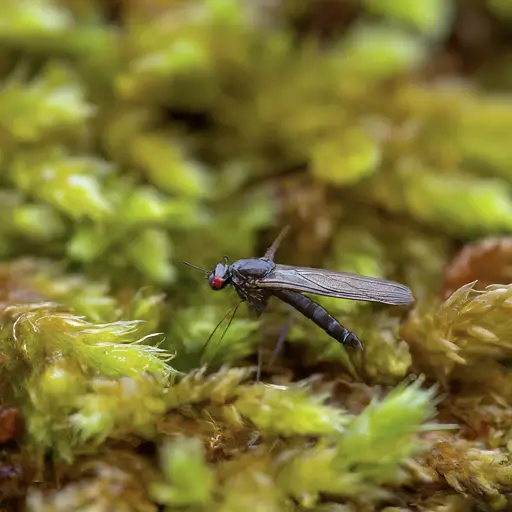
Fungus gnats, from the Mycetophilidae family, are small, fly-like insects that serve as detritivores in the alpine biome. These gnats are often associated with moist environments where fungi are prevalent, such as decaying wood and leaf litter. The larvae of fungus gnats feed on fungi and other decomposing organic matter, aiding in the decomposition process and contributing to nutrient cycling. This role is crucial in the alpine biome, where the breakdown of organic material is essential for maintaining soil health and supporting plant growth.
Fungus gnats play a key role in the food web, as they are a source of food for various predators, including birds, spiders, and amphibians. Their adaptability to the challenging conditions of the alpine biome allows them to thrive in a range of habitats, from forested areas to more open alpine terrain. By consuming fungi and other organic matter, fungus gnats contribute to the overall health and sustainability of the alpine biome, ensuring that nutrients are recycled and made available to other organisms.
14. Termites (e.g., Rhinotermitidae Family)
Termites from the Rhinotermitidae family are important detritivores in many ecosystems, including the alpine biome. These social insects are known for their ability to break down cellulose, a key component of wood and plant material. Termites play a critical role in the decomposition process by feeding on dead wood and other organic debris, contributing to nutrient cycling and soil health. In the alpine biome, termites often form colonies within dead trees, fallen logs, or underground, where they work collectively to decompose organic matter.
The activities of termites in the alpine biome have a significant impact on soil structure and nutrient content. As they consume wood and other plant materials, they contribute to the breakdown of complex organic compounds, making nutrients more accessible to plants and other organisms. Termites are also known to aerate the soil through their tunneling activities, which helps improve water infiltration and root growth. Despite their small size, termites are a driving force in the alpine biome’s ecosystem, supporting the food web and maintaining ecological balance.
*Summary
-
Springtails (Collembola): Small, wingless detritivores that decompose organic matter and contribute to nutrient cycling.
-
Alpine Earthworms (e.g., Lumbricidae Species): Break down organic material, aerate the soil, and support plant growth.
-
Alpine Sowbugs (e.g., Porcellio scaber): Decompose plant material, promote nutrient cycling, and provide a food source for other organisms.
-
Beetle Larvae (e.g., Carabidae Family): Decompose organic matter and act as predators, contributing to ecosystem balance.
-
Rove Beetles (Staphylinidae Family): Decompose organic matter and control pest populations.
-
Alpine Millipedes (e.g., Glomeris Species): Decompose plant material, promote soil health, and support ecosystem balance.
-
Mountain Ants (Formicidae Family): Break down organic matter, aerate soil, and engage in symbiotic relationships.
-
Alpine Mites (Acari Order): Decompose organic matter, regulate invertebrate populations, and contribute to soil health.
-
Dung Beetles (e.g., Scarabaeidae Family): Break down animal waste, promote nutrient cycling, and aid in seed dispersal.
-
Pill Bugs (e.g., Armadillidiidae Family): Decompose organic matter and contribute to soil structure and fertility.
-
Alpine Snails (e.g., Helicidae Family): Decompose plant material, promote nutrient cycling, and serve as a food source for predators.
-
Woodlice (Isopoda Order): Decompose plant material, contribute to soil health, and provide food for other organisms.
-
Fungus Gnats (e.g., Mycetophilidae Family): Feed on fungi and other organic matter, supporting nutrient cycling and soil health.
-
Termites (e.g., Rhinotermitidae Family): Decompose wood and plant material, aerate the soil, and contribute to nutrient cycling.
| Detritivore |
Role in the Alpine Biome
|
| Springtails (Collembola) |
Decompose organic matter and support nutrient cycling
|
| Alpine Earthworms (Lumbricidae) |
Break down organic material and aerate soil
|
| Alpine Sowbugs (Porcellio scaber) |
Decompose plant material and promote nutrient cycling
|
| Beetle Larvae (Carabidae) |
Decompose organic matter and control other invertebrates
|
| Rove Beetles (Staphylinidae) |
Decompose organic matter and control pest populations
|
| Alpine Millipedes (Glomeris) |
Decompose plant material and maintain soil health
|
| Mountain Ants (Formicidae) |
Aerate soil, break down organic matter, and engage in mutualism
|
| Alpine Mites (Acari) |
Decompose organic matter and regulate invertebrates
|
| Dung Beetles (Scarabaeidae) |
Break down animal waste and promote nutrient cycling
|
| Pill Bugs (Armadillidiidae) |
Decompose plant material and improve soil structure
|
| Alpine Snails (Helicidae) |
Decompose organic matter and serve as food for other species
|
| Woodlice (Isopoda) |
Break down plant material and support soil health
|
| Fungus Gnats (Mycetophilidae) |
Feed on fungi and support nutrient cycling
|
| Termites (Rhinotermitidae) |
Decompose wood, aerate soil, and support nutrient cycling
|
